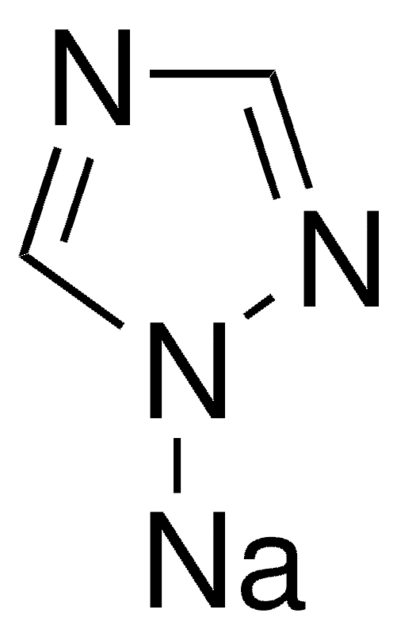222011
Copper(II) chloride
97%
Synonym(s):
Cupric chloride
Sign Into View Organizational & Contract Pricing
All Photos(1)
About This Item
Linear Formula:
CuCl2
CAS Number:
Molecular Weight:
134.45
EC Number:
MDL number:
UNSPSC Code:
12161600
PubChem Substance ID:
NACRES:
NA.22
Recommended Products
Quality Level
Assay
97%
form
powder
reaction suitability
core: copper
reagent type: catalyst
mp
620 °C (lit.)
density
3.386 g/mL at 25 °C (lit.)
SMILES string
Cl[Cu]Cl
InChI
1S/2ClH.Cu/h2*1H;/q;;+2/p-2
InChI key
ORTQZVOHEJQUHG-UHFFFAOYSA-L
Looking for similar products? Visit Product Comparison Guide
Related Categories
Application
Copper(II) chloride may be used in the preparation of copper(II)-chitosan complexes with potential applications in biomedical devices as antibiotic-free antibacterial biomaterials due to their cytocompatibility and antibacterial property.
Effective catalyst for the tetrahydropyranylation of alcohols, using mild conditions and in high yields.
Used with palladium in a catalytic synthesis of 3-haloindoles via an annulation process.
related product
Product No.
Description
Pricing
Signal Word
Danger
Hazard Statements
Precautionary Statements
Hazard Classifications
Acute Tox. 4 Dermal - Acute Tox. 4 Oral - Aquatic Acute 1 - Aquatic Chronic 2 - Eye Dam. 1 - Skin Irrit. 2
Storage Class Code
8A - Combustible corrosive hazardous materials
WGK
WGK 3
Flash Point(F)
Not applicable
Flash Point(C)
Not applicable
Personal Protective Equipment
dust mask type N95 (US), Eyeshields, Gloves
Choose from one of the most recent versions:
Already Own This Product?
Find documentation for the products that you have recently purchased in the Document Library.
Customers Also Viewed
Marcin H Kudzin et al.
Marine drugs, 18(12) (2020-12-30)
In recent years, due to an expansion of antibiotic-resistant microorganisms, there has been growing interest in biodegradable and antibacterial polymers that can be used in selected biomedical applications. The present work describes the synthesis of antimicrobial polylactide-copper alginate (PLA-ALG-Cu2+) composite
Manisha Kondiba Date et al.
Nanoscale research letters, 15(1), 45-45 (2020-02-20)
Three-dimensional (3D) CuO/TiO2 hybrid heterostructure nanorod arrays (NRs) with noble-metal-free composition, fabricated by template-assisted low-cost processes, were used as the photo-Fenton-like catalyst for dye degradation. Here, CuO NRs were deposited into anodic aluminum oxide templates by electrodeposition method annealed at
Synthesis, 1841-1841 (2007)
Lukas Gritsch et al.
Carbohydrate polymers, 179, 370-378 (2017-11-08)
We produced and characterized copper(II)-chitosan complexes fabricated via in-situ precipitation as antibiotic-free antibacterial biomaterials. Copper was bound to chitosan from a dilute acetic acid solution of chitosan and copper(II) chloride exploiting the ability of the polysaccharide to chelate metal ions.
Bhalerao, U.T. et al.
Synthetic Communications, 26, 3081-3081 (1996)
Our team of scientists has experience in all areas of research including Life Science, Material Science, Chemical Synthesis, Chromatography, Analytical and many others.
Contact Technical Service









